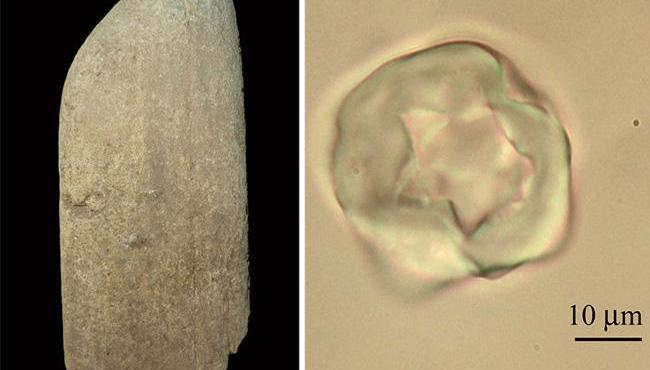-
Tips for becoming a good boxer - November 6, 2020
-
7 expert tips for making your hens night a memorable one - November 6, 2020
-
5 reasons to host your Christmas party on a cruise boat - November 6, 2020
-
What to do when you’re charged with a crime - November 6, 2020
-
Should you get one or multiple dogs? Here’s all you need to know - November 3, 2020
-
A Guide: How to Build Your Very Own Magic Mirror - February 14, 2019
-
Our Top Inspirational Baseball Stars - November 24, 2018
-
Five Tech Tools That Will Help You Turn Your Blog into a Business - November 24, 2018
-
How to Indulge on Vacation without Expanding Your Waist - November 9, 2018
-
5 Strategies for Businesses to Appeal to Today’s Increasingly Mobile-Crazed Customers - November 9, 2018
Paleo People the First Ones in History to Ever Make Flour
They discovered that some of the debris on the stone turned out to be oatmeal.
Advertisement
The stone is associated with the Gravettian period which happens to be a late Paleolithic time characterized with remarkable tool making skills.
The stone, which is “pale brown and not much bigger than my hand, ” was clearly used as a combination pestle and grinder, says Marta Mariotti Lippi, a botany professor at the University of Florence in Italy, who led the research team.
Ancient hunter-gatherer communities used to thrive in the Grotta Paglicci in the Apulia region in the past 34,000 to 32,000 years back where this culture has generated many crucial artifacts and tools, including mural paintings involving animals and bone etchings. Moreover, Lippi claims that she and her team will continue to examine the debris to understand what other prehistoric cultures had for meals. The hunter-gatherers were nomadic, so the extra nutritional value they received from the seeds and flour boosted energy for everyday tasks and lengthy travel.
The most common grain among them was wild oats, surprisingly the same strain of wild oats still grows throughout Europe. The most abundant found were from oat seeds, but also included other edibles such as acorns and relatives of millet. “The particular state of preservation of the starch grains suggests the use of a thermal treatment before grinding, possibly to accelerate drying of the plants, making the following process easier and faster”. Because the climate 32,000 years ago was cooler than it is today, seeds gathered in autumn might not have had enough time to dry naturally. Lippi said that the flour used by the Gravettian culture had the potential to be baked in to flat bread, which would have been easy to store for the winter.
There are other possible explanations for why the grains show signs of heating, notes John Speth, a professor emeritus of anthropology at the University of Michigan, who was not involved in the research.
Advertisement
The team also reported that the cave’s population used the pestle to grind whole oats turning it into flour before cooking and eating it. However, Lippi remains unclear about what exactly the ancient people did with the oats.




























